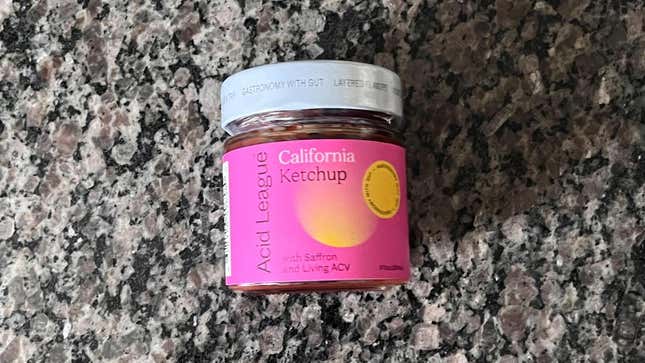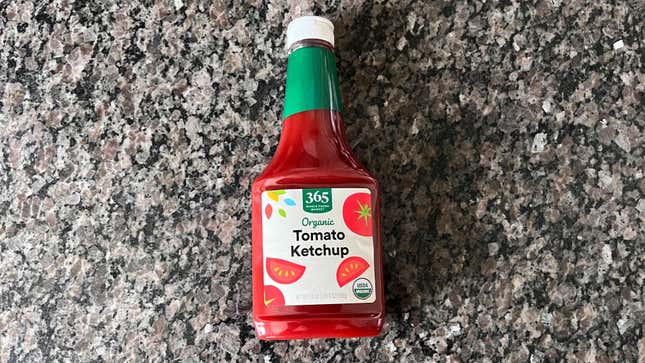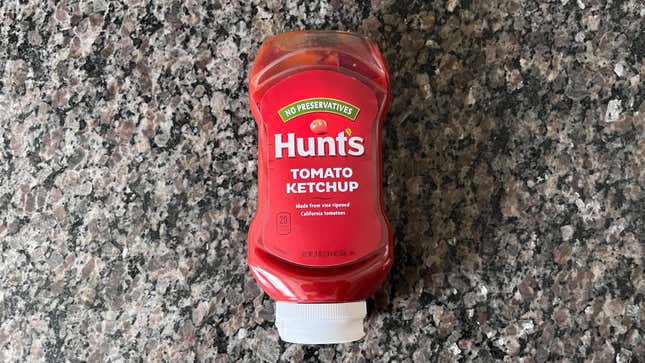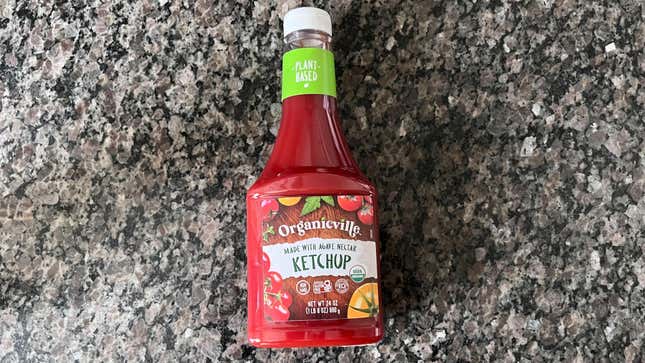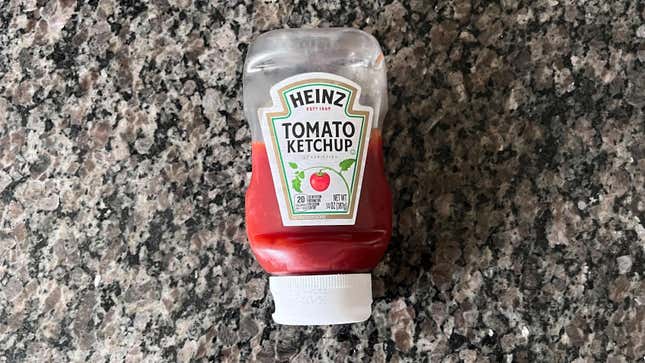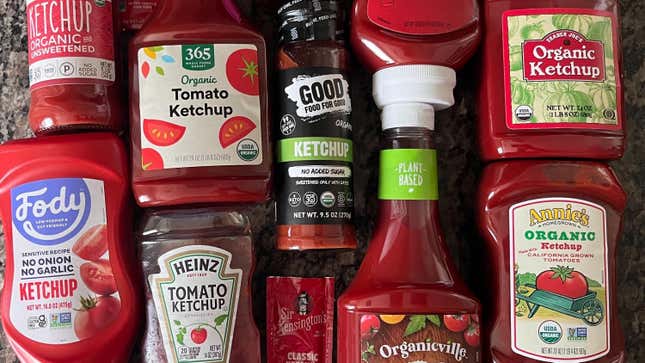
There’s something uniquely American about ketchup. I’m sure someone in the comments will correct me and note that it was actually first made in ancient Mesopotamia or something, and I know there are excellent global varieties, too (look up Maria Orsa, the war hero and food chemist who popularized Filipino banana ketchup). But America’s version of the sticky-sweet tomato condiment is part of the nation’s cultural identity, squired on fries or streamed across a hot dog, a staple of the picky child’s diet.
I’ll admit to disappointing both Anthony Bourdain and Barack Obama: I like ketchup on my scrambled eggs. Beyond its more typical uses, I’ve even heard tell of ketchup on pizza or atop a scoop of cottage cheese. While I’ll pass on those (and prefer mustard on my wieners), I took on the challenge of tasting every mass-market ketchup I could find.
To assess 11 different ketchup brands from four grocery stores, I tasted them each two ways: once using the winning fry from our frozen fench fry ranking as a dipping vehicle, and then again—horrifyingly—plain on a spoon, so as to capture all the nuances. Needless to say, I didn’t feel wonderful after all this.

Judging ketchups is an especially difficult exercise because one brand has so firmly established itself as the Platonic ideal of ketchup, both in my mind and the greater American consciousness: Heinz. I made sure to taste this ketchup last, judging the others on the idea of the “ketchup standard” Heinz arguably created while not trying to directly measure each product against Heinz specifically. The factors I judged were:
- Taste: Is this edible? You’d be surprised how many weren’t.
- Viscosity: Too runny? Weirdly grainy? Smooth? Cooperative in a dipping scenario?
- Craveability: How much do I want to keep on dipping?
Here’s what I found, along with a team of taste testers.
